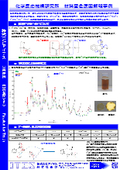[Data] Analysis of Additive Defects in Polymers Using Thermal Desorption GC-MS
It is possible to analyze with good sensitivity using thermal desorption GC-MS analysis! We propose methods tailored to the symptoms of issues and objectives.
Various additives are used in polymers to improve stability and processability; however, due to environmental impact and long-term storage, additive components may precipitate on the polymer surface, or the additives themselves may undergo chemical changes, leading to discoloration and degradation. This document presents examples of analyzing the bleed-out of additives and the chemical changes of additive components due to UV irradiation using thermal desorption GC-MS. Although additive components are present in only small amounts compared to the main polymer components, they can be analyzed sensitively using thermal desorption GC-MS. We propose methods tailored to specific issues or objectives, such as predicting product degradation in combination with reliability testing, thermal analysis, and main component analysis. Please feel free to contact us. [Contents] ■ Analysis of additive components bled out from nitrile rubber ■ Analysis of additive components in nylon 66 subjected to UV irradiation *For more details, please refer to the PDF document or feel free to contact us.
basic information
For more details, please refer to the PDF document or feel free to contact us.
Price range
Delivery Time
Applications/Examples of results
For more details, please refer to the PDF document or feel free to contact us.
catalog(13)
Download All Catalogs

News about this product(3)
-

Chemical Analysis Concierge Service
We would like to introduce our "Chemical Analysis - Trust Us Service." When conducting component analysis of foreign substances or stains on products, it can be challenging to determine whether organic analysis or inorganic analysis is more suitable, and which specific analysis within organic or inorganic is the most appropriate. We provide a comprehensive service for customers who are struggling with the selection of analysis methods. Since each analysis device can measure different targets, it is necessary to choose a method that fits the purpose based on the information available.
-

Analysis of mica sheet adhesive components using GC/MS.
This is an introduction to the analysis of adhesive components in mica sheets using GC/MS. To investigate what components are contained in the mica sheets, spectroscopic measurements were conducted, suggesting that silicone-based adhesives are used. To determine the composition of the silicone-based adhesive, GC/MS measurements were performed. It was found that pentacyclooctasiloxane is used, and it was also discovered that dibutyl phthalate is added as a plasticizer and linear saturated hydrocarbons such as tridecane are added as lubricants.
-

Analysis of LCD Display Materials
Liquid crystal displays use various organic materials, including liquid crystals, sealing materials, encapsulants, and polarizers. Considering the material properties and degradation mechanisms of each component from a chemical perspective is important for product evaluation and failure analysis. This document presents examples of chemical analyses for the components of liquid crystal displays. 【Examples of Chemical Analysis】 ■FT-IR: Principal component analysis ■EDX: Elemental analysis ■GCMS: Liquid crystal component analysis ■HS-GCMS: Outgassing analysis (degradation analysis) and others
Recommended products
Distributors
Aites was established in 1993, originating from the quality assurance department of the IBM Japan Yasu office. Based on the technical expertise cultivated through cutting-edge defect analysis and reliability assurance of electronic components at the IBM Japan Yasu office, we have provided various products and services that support the development and manufacturing of semiconductors, displays, organic EL, solar cells, and electronic components to customers both domestically and internationally.

































































